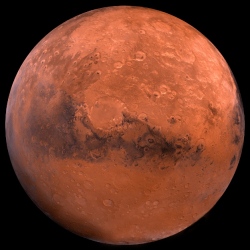
MIT researchers have developed a settlement-analysis tool to assess the feasibility of the Mars One plans to establish the first colony on Mars by 2025, finding that new technologies will be needed to keep humans alive on Mars. Mars One, considered by some to be essentially a reality TV show, claims that the mission can be built upon technologies that already exist.
The Mars One mission would initially send four astronauts on a one-way trip to Mars, where they would spend the rest of their lives building the first permanent human settlement. The MIT researchers found, for example, that if all food is obtained from locally grown crops, as Mars One envisions, the vegetation would produce unsafe levels of oxygen, which would set off a series of events that would eventually cause human inhabitants to suffocate. To avoid this scenario, a system to remove excess oxygen would have to be implemented, a technology that has not yet been developed for use in space.*
Similarly, the Mars Phoenix lander discovered evidence of ice on the Martian surface in 2008, suggesting that future settlers might be able to melt ice for drinking water, another Mars One goal. But according to the MIT analysis, current technologies designed to “bake” water from soil are not yet ready for deployment, particularly in space.
The team also performed an integrated analysis of spare-parts resupply, how many spare parts would have to be delivered to a Martian colony at each opportunity to keep it going. The researchers found that as the colony grows, spare parts would quickly dominate future deliveries to Mars, making up as much as 62 percent of payloads from Earth.
